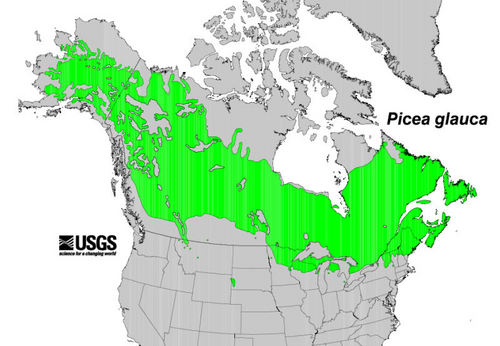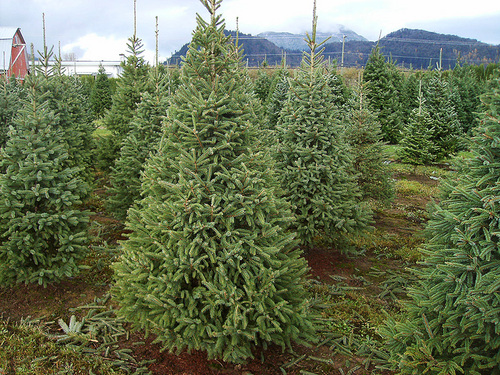White Spruce : Natural History
In New England, around 12,500 years ago, pollen samples show that some of the first conifers to reappear after the glacial retreat were red, black and white spruce trees. The seeds were easily dispersed with help from the wind; they grew rapidly and started reproducing at a young age. The white spruce flourished in the bogs and wetlands that the glaciers had left behind. This tree likes deep, moist and well-drained soil. White spruce grow faster compared to the red and black spruce, but have a shorter life span. White spruce are widely distributed in Canada and Alaska, but are also commonly found in the northern United States, including Vermont.
The white spruce is scientifically known as Picea glauca. All spruce trees have the genus Picea, and glauca comes from the glaucous bloom or waxy coating that appear on new needles of the white spruce. These needles have a distinctive pale blue-green tint. This tree is also commonly known as the cat or skunk spruce because the odor is said to be similar to that of a skunk. As I said in the introduction, they are used for ornamental purposes, such as your common Christmas tree. In general, spruces are liked for their sturdy branches and symmetrical shape. It takes 10-15 years for a white spruce to produce a good Christmas tree, which is slow compared to a pine that takes six to seven years. In most cases, a person will prefer a balsam fir or scotch pine over the white spruce. Even though the tree holds their needles decently, if crushed, they give off a displeasing smell that the majority do not like.
The white spruce is an emblem, as it is the state tree of South Dakota. On March 10, 1947, a variety of the white spruce called the Black Hills spruce (Picea glauca densata), became the state tree of South Dakota. There was some dispute that the cottonwood would be more suitable due to its widespread distribution or the juniper tree because it has a less “controversial and tricky” scientific name. These issues were researched and disregarded by a committee so the Black Hills spruce became the official state tree. This variety grows slower, is more compact and has denser and darker needles compared to the white spruce. For about four decades, the Black Hills spruce was thought of as a botanical variety of the white spruce that grew in more dense stands. Today, it is considered a geographical variety because it is most commonly found in South Dakota.


